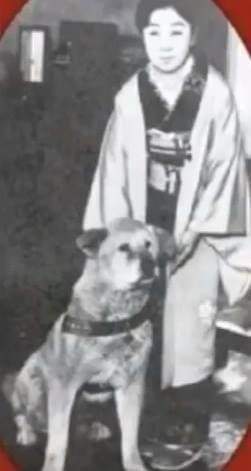The famous dog

HACHIKO
,A DOG LOVE FOR ITS OWNER IS FOREVER ,JAPAN, LEGENDARY HISTORY
Hachikō, the dog who waited his owner each day for ten years and became a national symbol of loyalty and fidelity in Japan.Hachikō was a dog from Japan who waited for his owner almost ten years after he had died. As a consequence, Hachikō became a cultural symbol of loyalty and fidelity in Japan.
Breed
His name means “hachi”- “eight” and “kō” – “affection.” He was an Akita dog, born in 1923, on a farm near the city of Ōdate, Akita Prefecture, Japan. He became famous during his lifetime as the dog from the Shibuya Station. After his death, the memory of Hachikō was kept alive in movies, books, statues, and other media.Hidesaburō Ueno, a professor in the agriculture department at the University of Tokyo got himself a pet in 1924. A golden brown Akita who waited for Ueno to come back from work. Each day, at the same time, Hachikō left the house to greet the professor at the nearby Shibuya Station, and they would spend the rest of the day together. One day in May 1925, Hachikō was waiting for Ueno, but unlike any other time, he didn’t show up at the station.
Death
that day or the next. What Hachikō didn’t know was that Ueno had suffered a cerebral hemorrhage and died during one of his lectures.Even though the professor never showed up, Hachikō waited for him to return each day at the station for the next nine years, nine months, and fifteen days. He showed up at the station precisely when the train was arriving.The dog was noticed by the people who were passing the Shibuya train station regularly. Some of them remembered that they had seen the dog and the professor together, but nobody paid attention to the dog. He was only annoying the employees at the station.Hirokichi Saito was a student of Ueno who knew the professor’s dog. After noticing Hachikō at the station, Saito followed him to the home of Ueno’s former gardener – Kikuzaboro Kobayashi and learned about the dog’s life. Soon after the meeting, Saito published a documented census of Akitas in Japan. According to his research, there were only 30 purebred Akitas in Japan, including Hachikō. He continued visiting Hachikō in the following years and published a few articles about the dog’s incredible daily routine and loyalty. But it was an article published in “Asahi Shimbun” on 4 October 1932, that made Hachikō, the dog from the Shibuya Station, famous. He became a national sensation.The fact that he had been waiting for his owner to return for seven years already greatly impressed the people in Japan.
 And who wouldn’t be impressed?.People saw Hachikō as a symbol of family values, as an example that children should follow, and as a symbol of the most meaningful values that a person should aspire to. Eventually, Hachikō’s legendary faithfulness became a national symbol of loyalty, particularly to the person and institution of Emperors.Hachikō was found dead on a street in Shibuya on 8 March 1935. Based on his date of birth, he was 11 years old. At the time, nobody knew how he died, but in 2011 scientists found that the causes were a combination of terminal cancer and a filaria infection.
And who wouldn’t be impressed?.People saw Hachikō as a symbol of family values, as an example that children should follow, and as a symbol of the most meaningful values that a person should aspire to. Eventually, Hachikō’s legendary faithfulness became a national symbol of loyalty, particularly to the person and institution of Emperors.Hachikō was found dead on a street in Shibuya on 8 March 1935. Based on his date of birth, he was 11 years old. At the time, nobody knew how he died, but in 2011 scientists found that the causes were a combination of terminal cancer and a filaria infection.
Buried
He also had four yakitori skewers in his stomach, but that didn’t cause his death. Hachikō’s remains were cremated and his ashes buried beside those of Ueno’s in Aoyama Cemetery, Minato, Tokyo. His skin was preserved, stuffed, and mounted and is on permanent display at the National Science Museum of Japan in Ueno, Tokyo. Each year on 8 March, Hachikō is honored with a solemn ceremony at the Shibuya Station. ADDRESS Burial site of dog and owner
Aoyama Cemetery
Tokyo
Tokyo Metropolis,

 My First News Item
My First News Item My Nine News Item
My Nine News Item